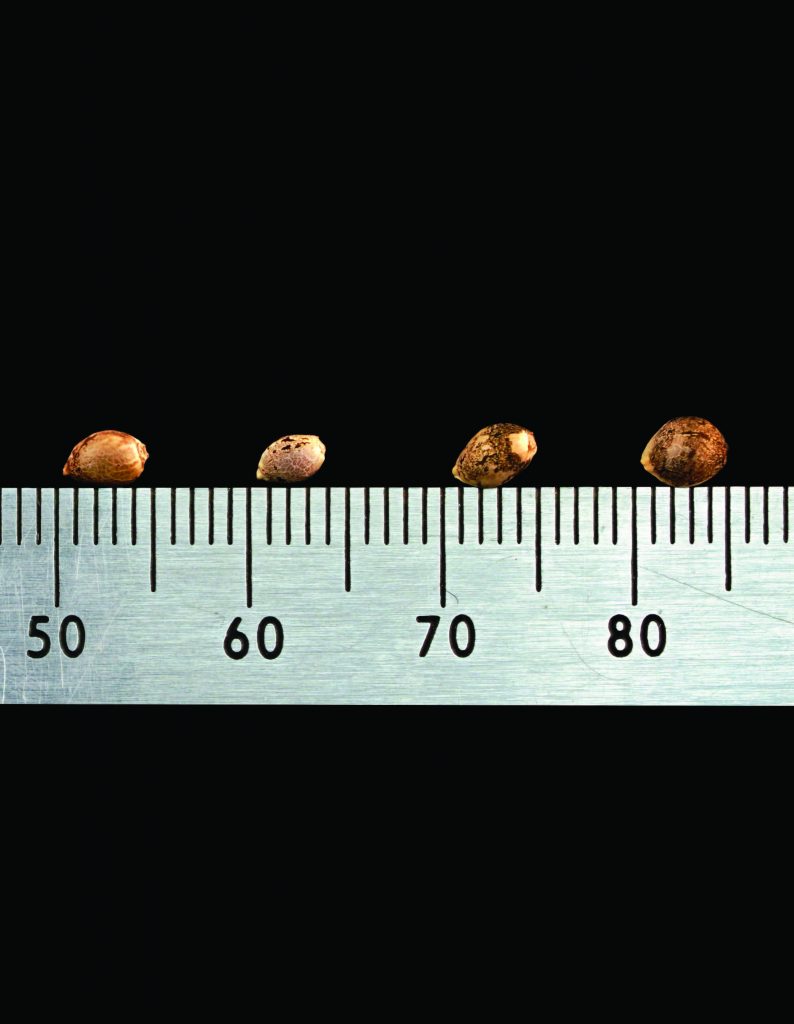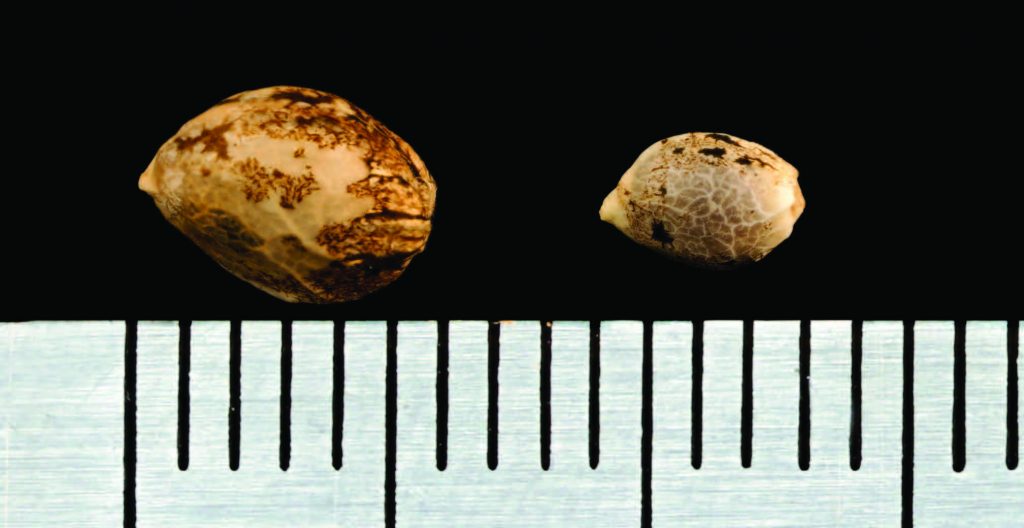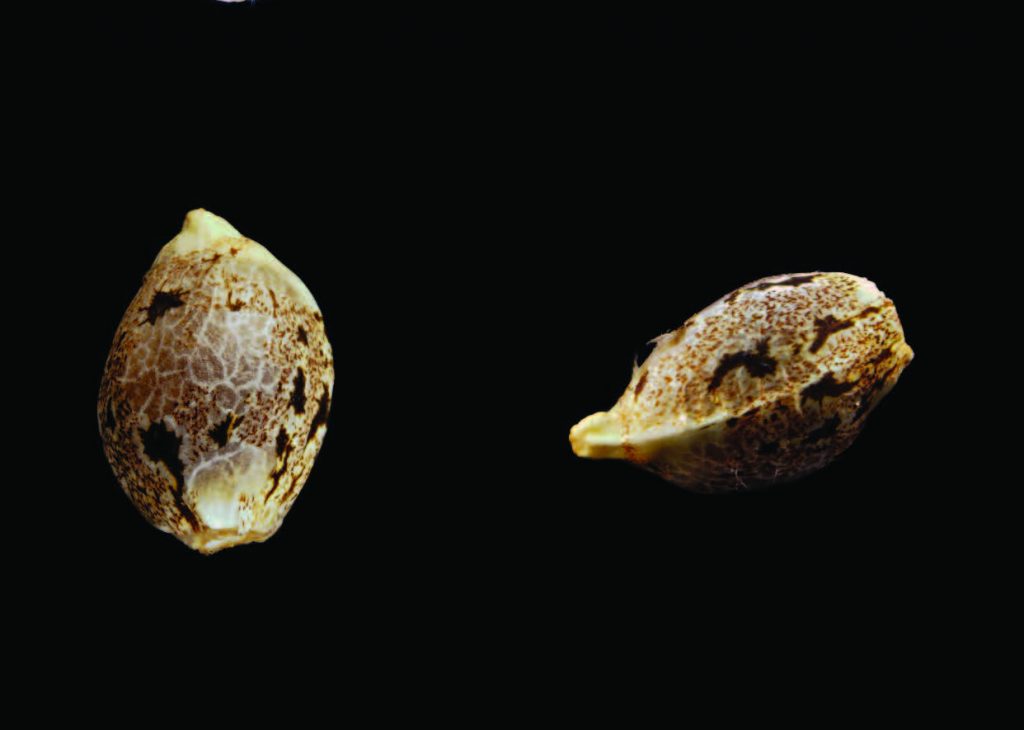Can you judge a seed by its shell?

Assuming a seed has fully developed and has been properly stored, it should be viable.
Seeds exhibit phenotypical expressions in the same way as parent plants, and visual differences among seeds are one such expression. Whether the shell is light or dark, tiger-striped or without pattern, big or small does not affect the genetic as long as the embryo inside has developed and remained protected.
A well-developed outer shell is thicker and more durable.
For this reason, a better developed seed will store better for an extended period of time. An overly thick shell, while increasing durability, can also have a downside: it can take longer to germinate (up to three weeks). The size of a seed’s shell is almost always a reflection of phenotypical expression.
Light colored seeds often have less developed shells.
While these seeds don't store as well long term, and may be more susceptible to breaking, the viability and quality of the genetic is not at all correlated with the development of the shell. Zweet and Lilac Diesel Autos produce extremely pale seeds that are viable and produce huge, strong plants. In all cases, as long as the embryo inside the seed develops and finishes, the genetics will be viable regardless of shell development.
"Tiger stripes" and phenotypical shell patterns vary dramatically by genetic.
Some seeds are opaque or partially white even when produced correctly. They can vary from opaque all the way to dark chestnut brown, and many have the famous tiger stripes. Others present a more consistent wood grain appearance.
Shell patterns are the sheaths of the shell, not the actual shell itself.
You may notice that some seeds have only a partial pattern, appearing to have flecked off in areas. Seeds sometimes outgrow their sheaths, resulting in these visible splits. You can actually peel a shell's sheath off. All seed shells on the inside are somewhere between opaque and chestnut in color.

HOW TO TEST YOUR SEEDS: SQUEEZE THEM
A simple age old test for me is to squeeze a seed between your fingers.
If it breaks, throw it away. A good solid seed should not break between your fingers (but may break if pressing on a harder surface like a table).
Can you tell a seed's gender by looks? No.
Seed variations occur in both regular and feminized seeds. The same variety of colors, darkness, development, patterns, and sizes is found among both types of offspring.
All physical expressions of a seed's morphology are based on the genetics and the pollination environment. Were there a bunch of stigmas pollinated? Did the seed have elbow room to develop? What kind of lighting did the plant get? What part of flowering did it get pollinated (early on offers more time to mature)?
Some plants always produce the same seeds.
Ghost Train Haze always produces pumpernickel-looking seeds that are tiny, weirdly small, and always dark. No matter how or when she's pollinated, the seeds are always the same. But some plants will vary dramatically based on when they are pollinated.
Mandarin Sunset has a phenotypical expression that looks like a fissure running down its length.
Where the seed meets, it looks like there was an earthquake. From one angle, the seed can look cracked, but from another, it looks like a tectonic ridge. If the seeds were cracked, they would crush between your fingers, whereas this pattern is tied to the genetic expression of the seed.

5 Most Common Reasons Your Seeds Didn't Pop
Origin Error: The seeds weren’t viable when shipped. This can be a result of improper storage post-harvest, or simply old seeds that were not properly cared for.
Environment: Your seeds were exposed to heat for any elongated period of time during shipping. This usually happens during Summer (in cold seasons, you can eliminate this as a probability). During hot months, seeds can get stuck in trucks for a few days, and if your package gets delayed and you end up with a 0% germination rate, the most likely cause is heat exposure. This can be especially easy to identify if packs shipped to other regions or during other seasons germinated normally.
User Error: How long have you had them and how have they been stored? If you live in a region with significant humidity and/or temperature fluctuations, your seeds could be affected. As you may recall from our piece on Seed Germination and Storage, ETHOS recommends a dry, cool, dark environment with consistent humidity levels under 60% for short term storage, and vacuum- or nitrogen-sealing seeds for longer periods. Remember: Refrigerators are not optimum for proper seed storage because of the humidity fluctuations. (Commercial refrigerators with humidity control are the exception.)

Your seeds are viable, but you didn’t wait long enough. I have done this more than once, personally; I've given up and a week later the stragglers have sprouted. My favorite example was forgetting about a cup of seeds after four of the five varieties sprouted normally. A week later, I came back to it to find a ton of sprouts flying out; it had taken about three weeks total due to some unusually thick shells. Now, if I have thick shells that I am worried about, I scuff them with sandpaper.
Production Error: The seeds are too fresh. This most commonly happens if you make your own seeds and go to plant them right away. If you have just harvested your seeds, it can take upwards of two weeks for those seeds’ viability to reach 100% (like buds, seeds need time to dry and mature post-harvest). The timeline varies, but if your seeds came out of a fresh green bud, it is likely that those seeds are not quite ready for germination.
